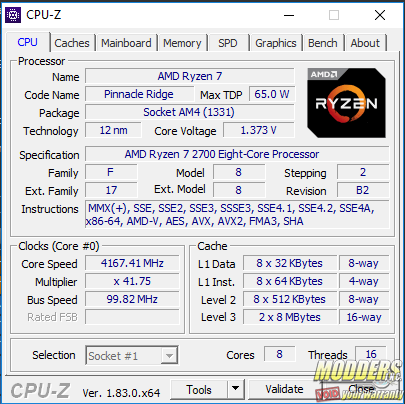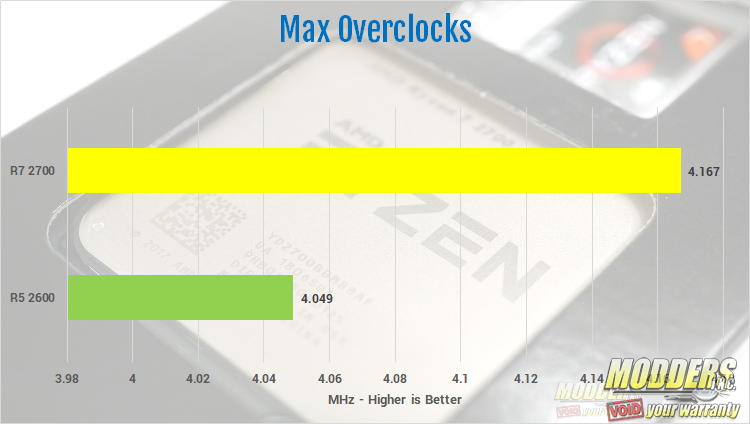Overclocking and Temperatures.
I always try to keep the testing environment the same from review to review. However, with it being summer, that can be difficult as it gets very hot in the North East. I usually have the office between 19°c and 21°c (66°F to 70°F). While testing for this review, the best I could do was 23°c (about 74°F). We use the Aida64 Stability Test to validate the overclock. The stability test runs for about 15 minutes or so. With that, the R7 2700 did rather well both overclocking and with temps. When set to its stock speed of 3.2 GHz, the 3700 idled at around 31°c (88°F) and hit 62°c (144°F) while under load. Keep in mind, this is on a custom loop. Even though the stock speed is 3.2 GHz on the R7 2700, it usually boosts between 3.5 GHz and 3.6 GHz. Even with a higher ambient temperature than usual, I was still able to achieve the highest overclock I’ve got on this specific 2700 processor. The chip maxed out at 4.167 GHz at 1.373 volts. This was higher than it hit on the initial review of the 2700. On that round of testing, this 2700 hit only 4.099 GHz. Temps while overclocked weren’t bad either. The idle temp was around 34°c (93°F) and under load, 73°c (163°F). The second generation Ryzen 7 2700 did far better than its first generation counterpart when it comes to overclocking. If I remember correctly my 1800x only hit 3.974 at something like 1.5 volts. This isn’t the improvement in overclocking we had hoped for, but an improvement, either way, you look at it.










